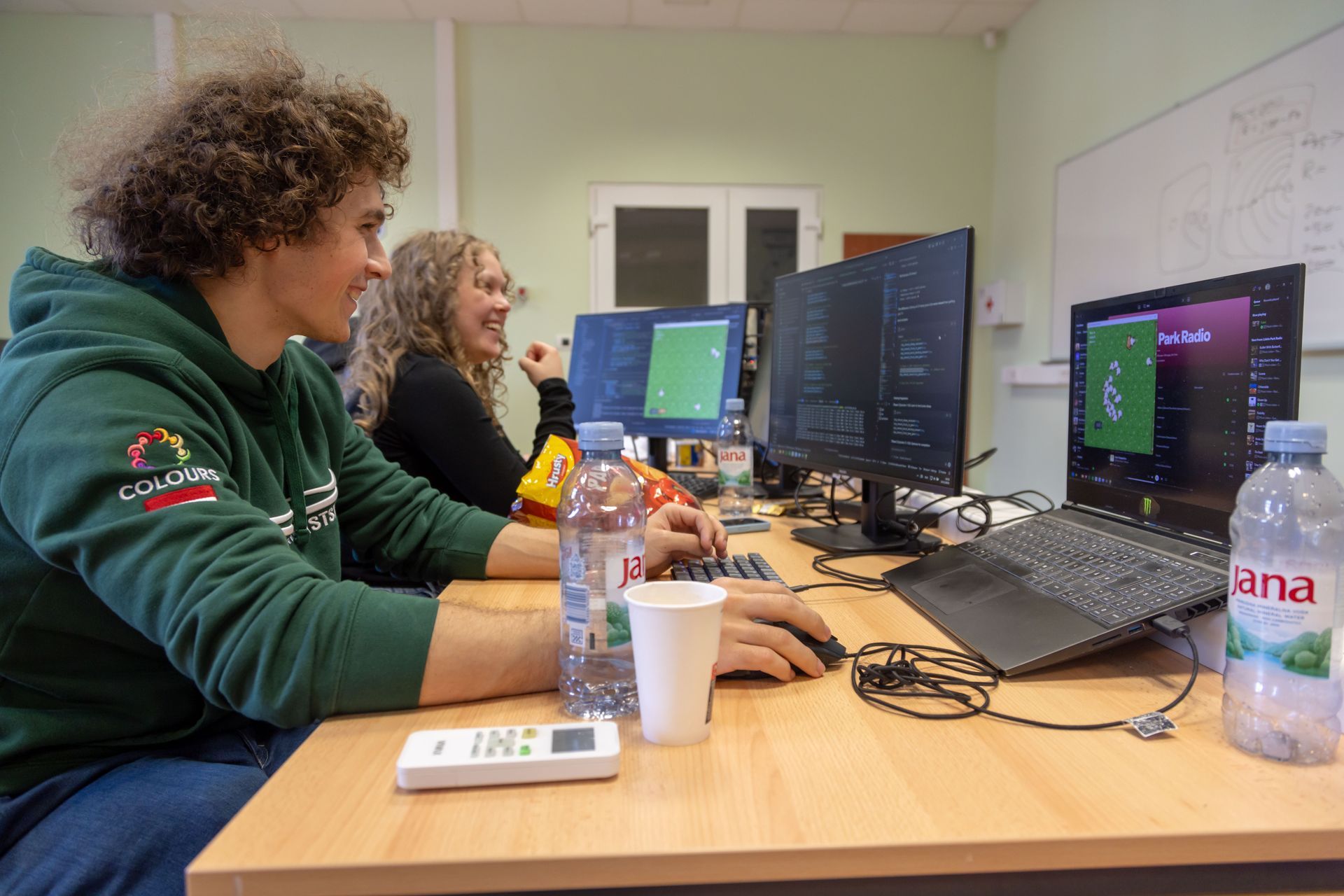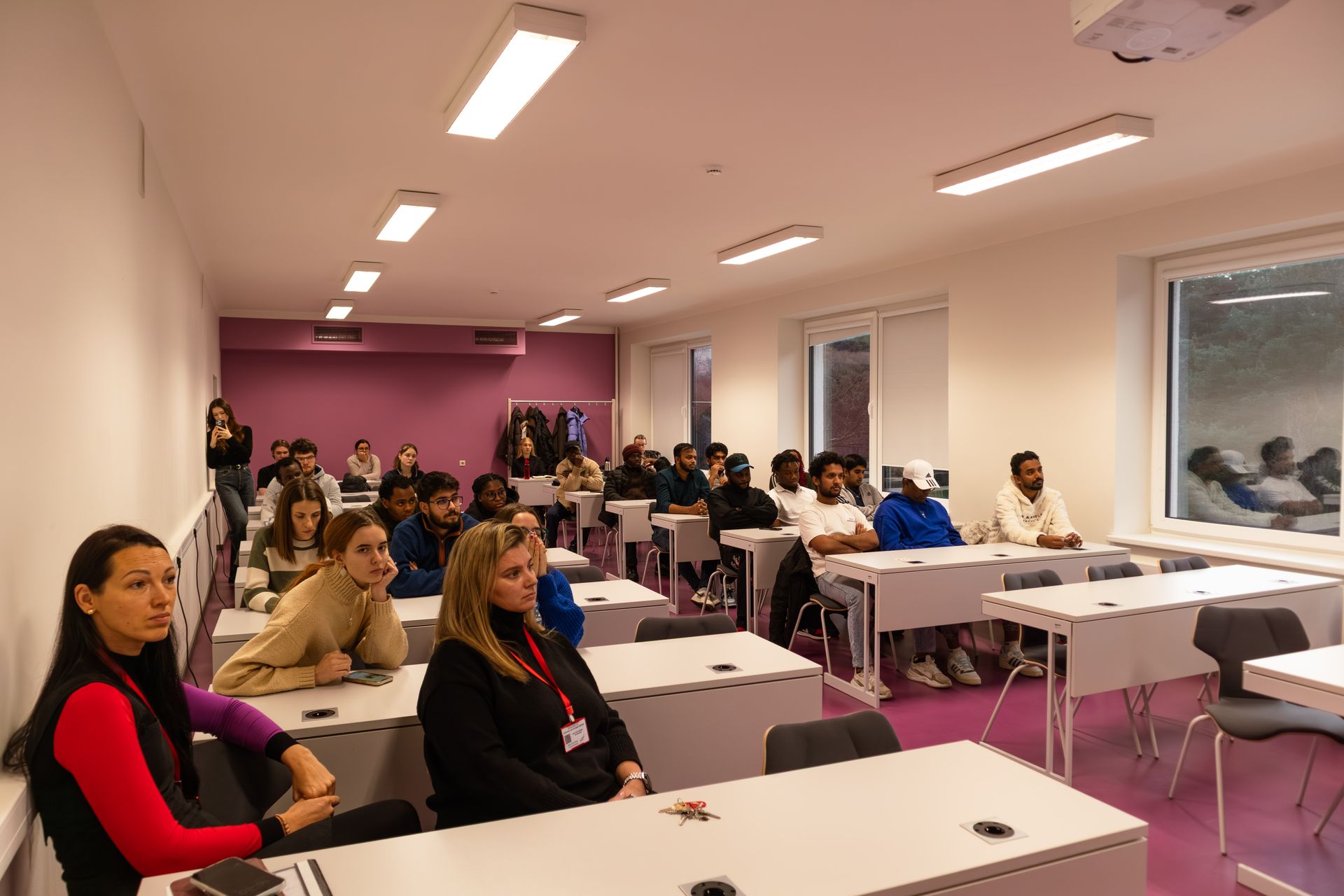Initiative for Space Weather Investigations 2025
BLU 2025 - workshop of the Bulgaria – Latvia – Ukraine
Initiative for Space Weather Investigations
June 2-6, 2025
Primorsko, Bulgaria
Main topics:
- Key areas of space weather research at participating organizations
- Solar flare studies and related phenomena
- Discussion of ongoing and prospective joint projects
- Regional, European, and international programs on solar and space weather research and applications
- Support for Ukraine in restoring its scientific and technical research capacity
- Organizational and coordination matters
Organisations:
- Space Research and Technology Institute (SRTI), Sofia, Bulgaria
- Engineering Research Institute of Ventspils International Radio Astronomy Centre (ERI VIRAC), Ventspils University of Applied Sciences (VUAS), Ventspils, Latvia
- Institute of Radio Astronomy of the National Academy of Sciences of Ukraine (IRA NASU), Kharkiv, Ukraine
- Odesa Radio Astronomy Observatory "URAN-4", Institute of Radio Astronomy of the National Academy of Sciences of Ukraine (IRA NASU), Odesa, Ukraine
- S.I. Subbotin Institute of Geophysics of the National Academy of Sciences of Ukraine (IG NASU), Kyiv, Ukraine
- Odesa I.I. Mechnikov National University, Faculty of Mathematics, Physics and Information Technologies, Odesa, Ukraine

For more information:
Vladislavs Bezrukovs (VIRAC, Latvia) vladislavsb@venta.lv
Artem Sukharev (VIRAC, Latvia) artem.sukharev@venta.lv
Mikhail Rybov (IRA NASU, Ukraine) ryabov-uran@ukr.net
Volodimir Komendant (SRTI, Bulgaria)
Project No. lzp-2022/1-0017. Multi-Wavelength Study of Quasi-Periodic Pulsations in Solar and Stellar Flares (STEF).
Project No. 1.1.1.9/LZP/1/24/048. “Research on Space Weather During Solar Cycle 25 Observed Along the Struve Geodetic Arc”.
Programme
| D. Bezrukovs | “Observations of the solar radio emission during Sun eclipse on March 29, 2025.” |
| V. Bezrukovs, E. Aguirre, W. Bouzarhoun El Asry, I. Janices, A. Orbidāns, D. Bezrukovs | “Advances in automated solar observations and multidimensional spectropolarimetric imaging at Irbene.” |
| J. Šteinbergs | “Updates from the LOFAR station at the Irbene radio observatory.” |
| N. Jotkus | “Current status and trends on space debris issues.” |
| V. Bezrukovs | “Updates on the visit to the Paris Observatory and the Nançay Observatory, discussion about collaboration perspectives.” |
| V.O. Shepeliev, O.O. Lytvynenko, S.K. Panishko, V.G. Derevyagin, G.S. Pidgornyi | “Ionospheric scintillations spectra at middle latitudes during strong geomagnetic storms.” |
| V. Melnik, A. Brazhenko, V. Dorovskyy, A. Frantsuzenko, M. Shevchuk | “Solar radio emission at low frequencies as an indicator of ionosphere.” |
| V. Dorovskyy, V. Melnik, M. Shevchuk, A. Brazhenko | “Spectral, polarization and spatial properties of two successive Type IV bursts observed on 21 August 2015.” |
| M.V. Shevchuk, I.M. Bubnov, V.V. Dorovskyy, O.M. Ulyanov, L.A. Stanislavsky, V.V. Zakharenko, A.A. Konovalenko, A.A. Stanislavsky, A.M. Reznichenko, V.Yu. Selin, A.S. Belov, S.M. Yerin, P.L. Tokarsky, V.V. Shevchenko | “Usage of the solar energy for the solar radio observations with mobile antenna array.” |
| M.I. Ryabov, A.L. Sukharev, V. Komendant | “25th cycle of solar activity – the main manifestations of space weather.” |
| M.I. Ryabov, A.L. Sukharev, M.I. Orlyuk, D.A. Zabora | “Review of the effects of solar eclipses in the Earth's ionosphere.” |
| A.L. Sukharev, M.I. Orlyuk, M.I. Ryabov, A. Romenets, Yu. Sumaruk, V. Kashuba | “About the preliminary results of appearance of the solar eclipse on March 29, 2025 according to magnetometric observations along the ‘Struve Arc’.” |
| A.L. Sukharev, O.M. Ulyanov, M.I. Ryabov, D. Zabora | “Application of digital filtering methods for selecting radio source signals under interference conditions on URAN system radio telescopes.” |
| A.L. Sukharev, I. Usoskin, A. Kero, V. Bezrukovs, J. Šteinbergs | “Observations of the effects of the solar eclipse of March 29, 2025 using measuring complex of the Sodankylä Observatory in Finland – preliminary results.” |
| D.F. Zabora, M.I. Ryabov, A.L. Sukharev | “On the formation of the database of observations of monitoring of powerful space radio sources on the RT URAN-4 for the period of the 22nd solar cycle (1987–1992).” |
| M. Orlyuk, A. Romenets, A. Marchenko, I. Orliuk | “Regarding the relationship between strong geomagnetic disturbances and the Earth's internal magnetic field in the vicinity of the Struve Geodetic Arc.” |
| M.A. Didenko, M.I. Ryabov, Eu.M. Strahov | “Application of cluster analysis methods to spatial and temporal distribution of solar flares in different cycles.” |
| O.V. Marmaliuk, A.L. Sukharev, Eu.M. Strahov | “Study of the properties of geomagnetic variations in the Odesa magnetic anomaly using continuous and discrete wavelet analysis methods.” |
| Eu.A. Khromov, A.L. Sukharev, Eu.M. Strahov | “Modeling the relationship between data changes in the geomagnetic field, cosmic rays and solar wind using neural network and cross-spectral wavelet analysis methods.” |
| Lytvynenko O.A., Panishko S.K. | "The cyclicity of radio interference manifestation in the data of cosmic radio sources monitoring in the decameter wavelength range." |
| Lytvynenko O.O., Shepeliev V.O. | "The possibility of signal intensity restoration on radio telescopes with a small effective area in the VLBI system. " |
| Lytvynenko O.O., Derevyagin V.G., Yasynskyi V.V. | "Classification of radio interference and its manifestation in cosmic radio sources radiometric records on the URAN-4 radio telescope." |
| Komendant V. | "Cross-spectral Analysis of the B-Star Drag Term and Solar and Geomagnetic Activity Indices." |
Share on other platforms
Other news







